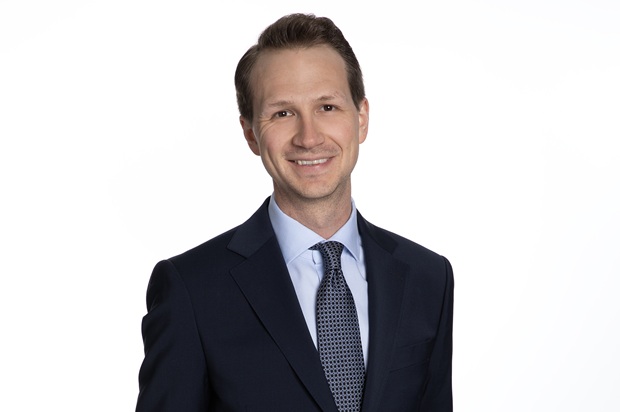
Discussing different equity investment styles
Earlier this spring, Tell Media Group, in cooperation with American Century Investments, Baillie Gifford and Lazard Assets Management, organised a roundtable discussion at Hotel d’Angleterre in Copenhagen, focusing on equity style exposures.
The discussion started out with Caroline Liinanki, editor of Nordic Fund Selection Journal, asking Ebbe Matthiesen about PensionDanmark’s investment philosophy for equities and what the portfolio look like in terms of styles and themes.
EBBE MATTHIESEN: “We’ve been in a transition period over the last year where the direction of travel has been towards a lower tracking error in the overall portfolio. There are, of course, many drivers behind that but one is the concentration in the market and specifically the weight of the magnificent seven. We’ve tried in the past to balance growth and value tilts in the portfolio and that has been a challenge and today we don’t have any factor tilts in our equity portfolio.”
NIKLAS TELL: ALLAN, WHAT ARE YOU HEARING WHEN WORKING WITH YOUR CLIENTS IN TERMS OF THEIR EQUITY PORTFOLIO STRUCTURE?
ALLAN LORENTZEN: “Most of our clients are small institutions and here we have more of a say in the approach they take. When we talk to larger clients, we typically see that it’s either/or. Either they have portfolios that are completely factor driven or not at all. But it’s really difficult to find investors that are good at calling the right time for being growth or value. When we work with smaller institutions, we simply try to find good quality managers and that could be a value manager or a growth manager. Then we try to establish a pool of managers with a low correlation in the alpha generation, which should give us a stable, long-term alpha generating portfolio.”
NIKLAS TELL: AS PORTFOLIO MANAGERS, IS THIS SIMILAR TO WHAT YOU HEAR WHEN YOU TALK TO INVESTORS?
DAVID BYRNS: “We have run our value strategy with the same philosophy and process for some 30 years where the aim is to find quality value companies. We’re simply aiming to invest in the best businesses we can find and we’re looking to buy them when they’re cheap. We typically see that clients pair us with other managers that have different risk factors and use us for our alpha generation abilities, so that could be a growth strategy to create more of an overall core exposure.”
STEWART HOGG: “The strategy that I’m aligned with is very concentrated and when it was launched back in 2004, it was a very different proposition. This form of high conviction investing is probably more common now. The strategy is designed to be a return generating machine over the longer term but you will have to accept that it will come with volatility. We don’t agree that high tracking error is high risk – especially when you know the companies deeply and you operate on a five to 10 year time horizon.”
STEPHEN TONG: “If you look at the portfolios of the managers represented around this table, I don’t think we have any stocks in common. Each of us will select stocks that we think will outperform based on the style we follow. If we stick to what we say we do, you would be able to combine the strategies together and gain both outperformance and diversification. Our clients typically mix different styles.”
NIKLAS TELL: IS THERE A RISK THAT YOU DILUTE THE BENEFITS WHEN YOU COMBINE DIFFERENT STYLES IN ONE PORTFOLIO?
ALLAN LORENTZEN: “At some point you, of course, risk buying the index but I think you would be far away from that if you blend the three managers around the table today.”
EBBE MATTHIESEN: “Coming back to my starting point, I think it’s fair to say that with the development of the magnificent seven driving performance, it has been challenging for active managers. One way to get around that is to buy the seven according to the index and then have an equal weight of the rest and evaluate external managers against that second bucket. At the end of the day, it comes down to your tracking-error budget and right-sizing your bets with external managers. If something happens in an external mandate, we should be able to keep that manager.”
STEWART HOGG: “One of the things we talk about a lot internally is optimism and being long term. This mindset is important as it helps battle against our inherent human tendencies of loss aversion. Most investors spend too much time trying to ensure bad things don’t happen but it’s inevitable – company progress is rarely in a straight line. As a manager of a growth strategy, your returns in the long term will be determined by the things that go very, very right. It’s determined by the stocks that multiply many times over. I think it’s wrong to focus too much on the current state of the market and the magnificent seven. That’s backward looking. These companies have performed very well historically to be where they are today and the right thing – which we did – was invest in them five or 10 years ago. What is more important today is understanding what can be a tailwind for certain companies going forward and ensure we invest in them now.”
… continued … the roundtable discussion was originally published in issue 03, 2024 of Nordic Fund Selection Journal and a PDF of the complete story can be found here.
// Participants
- EBBE MATTHIESEN, Senior portfolio manager, PensionDanmark
- ALLAN LORENTZEN, Managing partner at Jentzen & Partners
- DAVID BYRNS, Portfolio manager and senior investment analyst, American Century Investments
- STEWART HOGG, Investment specialist director, Baillie Gifford
- STEPHEN TONG, Director, portfolio manager/analyst, Lazard Asset Management



